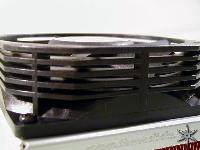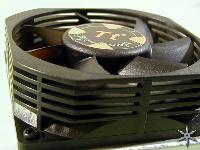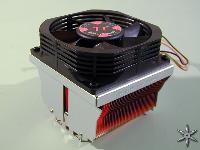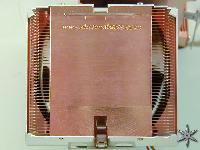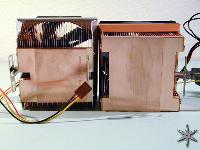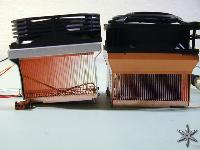After careful consideration I have decided to transfer all hardware review activities to a new domain. I purchased Hardwareasylum.com in 2012 and have been working hard to build a new and improved Ninjalane on that domain. If you are reading this you have reached one of the archived articles, news, projects and/or reviews that were left behind during the site migration.
Please update your bookmarks and be sure to visit the new and improved Ninjalane at Hardwareasylum.com
Thermaltake Silent Boost Review
Author: Dennis Garcia
Published: Sunday, September 14, 2003
Introduction
Since the introduction of the 60mm Delta "screamer" the quest for a quieter alternative had begun. Some of the initial design alternatives included fan adapters that would allow 80mm fans to be installed on 60mm heatsinks. For the most part this approach did nothing to enhance cooling and caused more problems than it solved. As time progressed larger heatsinks hit the market using a wide variety of 80mm fans. While this has since become the standard for Athlon processor cooling the heatsinks haven't gotten any quieter.
The cooling fan is very unique both in looks and in specs. The fan spins at 2400rpm and moves a respectable 27.5cfm at 21 dBa. It also features a "Hydro wave bearing" that is supposed to decrease bearing wear and extends fan life.
The casing is what makes this fan different, the vents help to reduce fan noise and even increase airflow by pulling air in from the top and sides. Air pressure appears to be reduced but overall volume is increased. Simply put you get more air and less noise.
The casing is what makes this fan different, the vents help to reduce fan noise and even increase airflow by pulling air in from the top and sides. Air pressure appears to be reduced but overall volume is increased. Simply put you get more air and less noise.
The rest of the heatsink is pretty standard; Though it may be hard to tell the cooling fins are made from interlocking copper strips and are bonded to the base. The base of the heatsink is a little smaller than most but does have the Thermaltake URL engraved in it. Not really a huge selling point but kind of fun, to say the least.
The Silent Boost is a very open heatsink that uses some fairly tall fins. I am always surprised at how well these bonded fin heatsinks work though as of yet haven't been able to match the raw cooling power of the skived fin designs.

